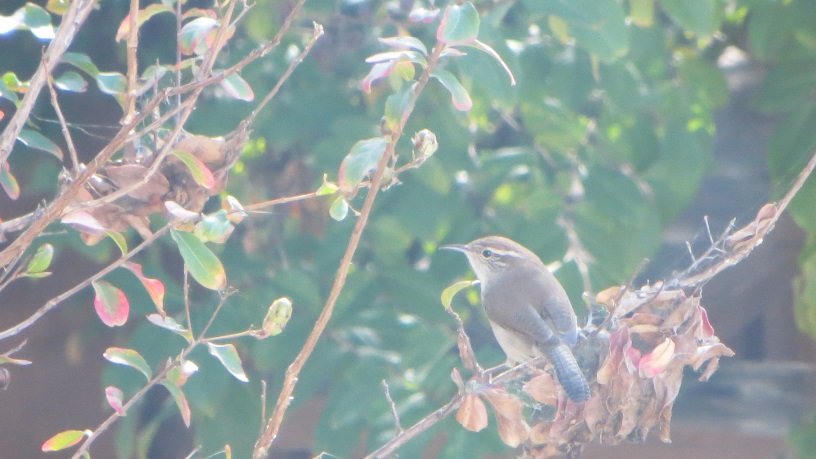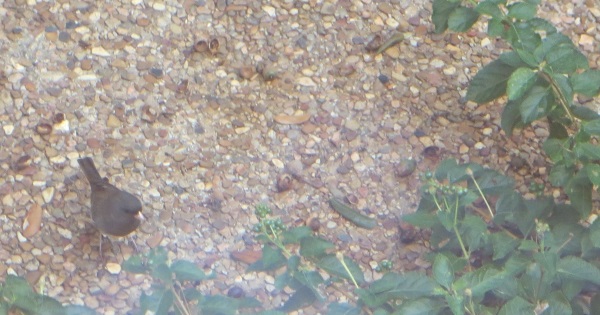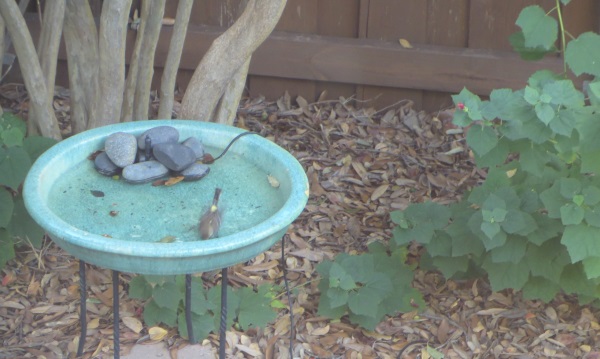The Yellow-rumped Warblers and Dark-eyed Juncos have been back and enjoying our back yard for several weeks now. This year, the warblers have decided to trust our bird bath - we’ve frequently seen them drinking and bathing over the past several weeks. While the Blue Jays have still been coming round, and we’ve had several sightings of Orange-crowned Warbler and Ruby-Crowned Kinglet this fall, I hadn’t seen a Bewick’s Wren in quite some time. Thus I was delighted to see this guy a few days ago. The light isn’t very good, and the window is a bit dirty, but the ID is clear.

Bewick’s Wren foraging in a crapemyrtle
All of these birds are coming around because we’ve provided habitat for them: water, food, shelter. While native plants provide the most diverse and beneficial habitats, some non-natives can also play a meaningful role in our backyard habitats. For a few years I dismissed the non-native crapemyrtle as showy but useless. That is, until I saw Gold Finches eating their seeds in the front yard last year.
In this photo, notice that clump of leaves next to the bird. You can kind of tell that there are webs there. Many people would find the web unsightly. But to a Bewick’s Wren (and many others), it is buffet full of delectable spiders, caterpillars, and other protein-filled bugs. This little guy was hopping from clump to clump, pulling tasty morsels from their depths. I love seeing and hearing the Bewick’s Wren and Ruby-crowned Kinglets, who also frequently dine on crapemyrtle pests, so for me those little clumps of web and leaf are no less attractive than any store-bought feeder.

Dark-eyed Junco on the patio

Yellow-rumped Warbler Bathing
Posted with : Nature, Sustainability, Environment, Wildlife, Life Lived Living, Birds